A photo tour of Santiago’s La Moneda Cultural Center
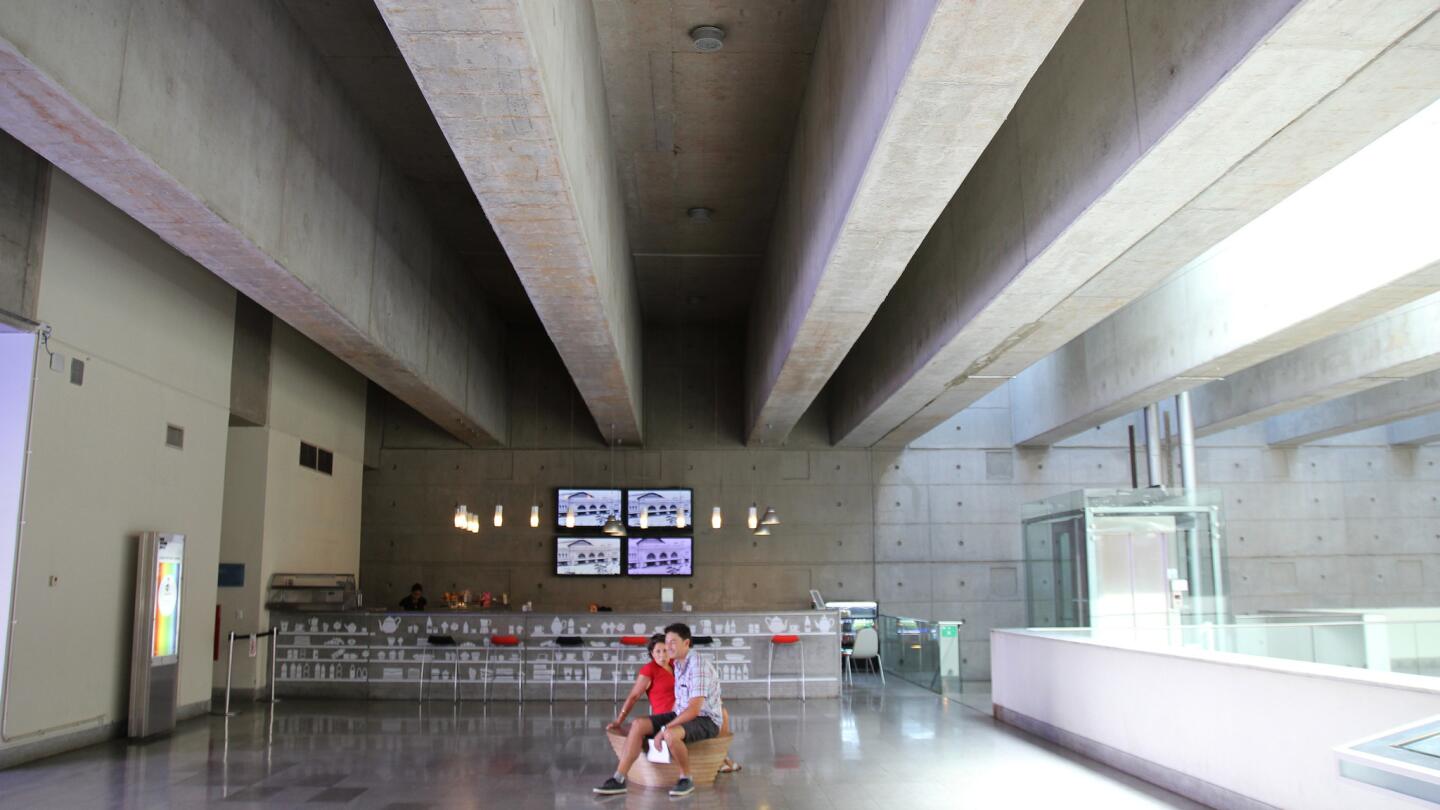
The Cultural Center was completed in 2009, from a design by prominent Chilean architect Cristian Undurraga of Undurraga Deves Arquitectos. Dipping three stories underground, the center adds a sliver of civic space to a part of Santiago crowded with government buildings. (Carolina A. Miranda / Los Angeles Times)
An important architectural site in Santiago is hosting LACMA’s Islamic art collection - and it looks terrific.
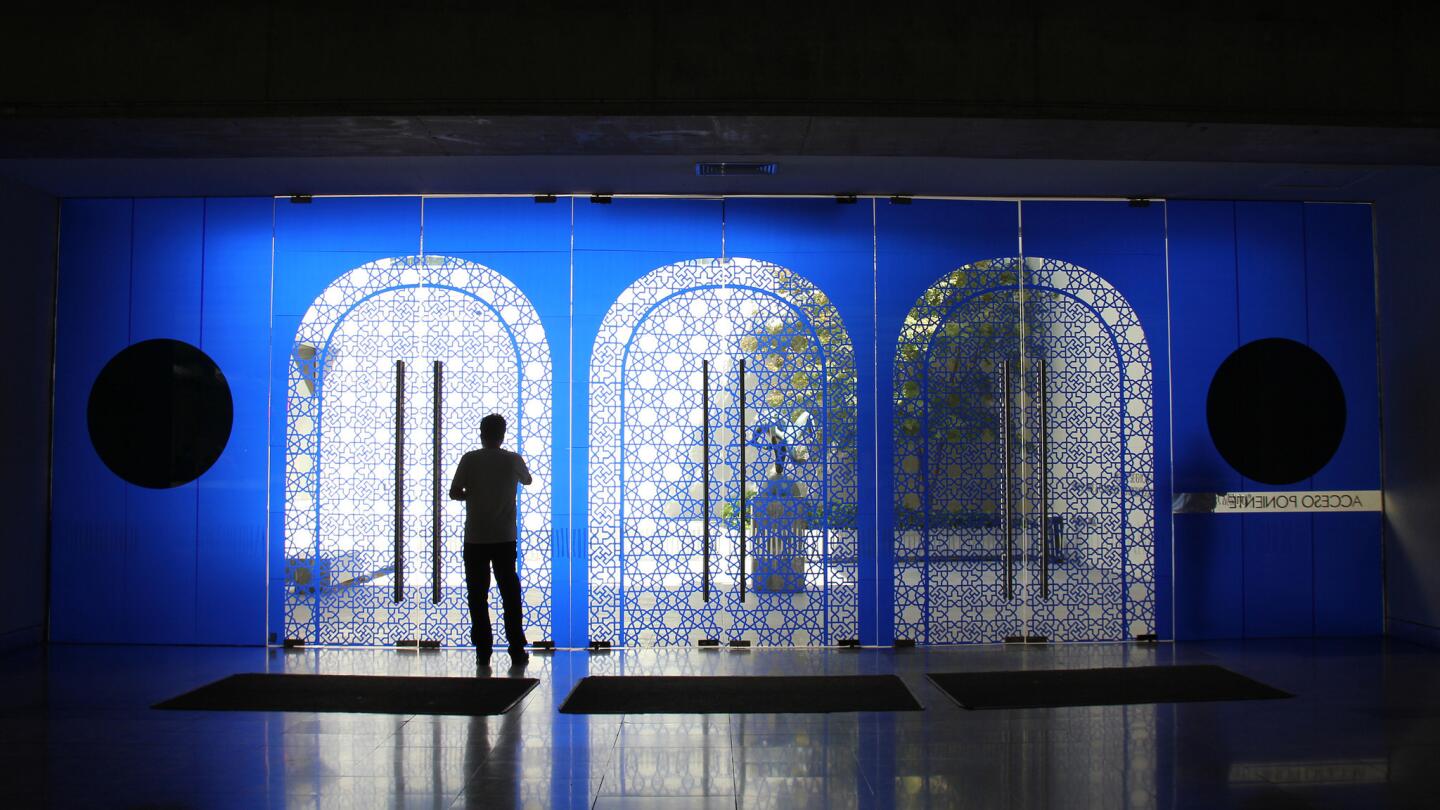
I went to check out La Moneda’s architecture and discovered that the center was hosting an exhibition of works from LACMA’s Islamic art collection. To mark the show, an Islamic pattern on the front door welcomes visitors. (Carolina A. Miranda / Los Angeles Times)
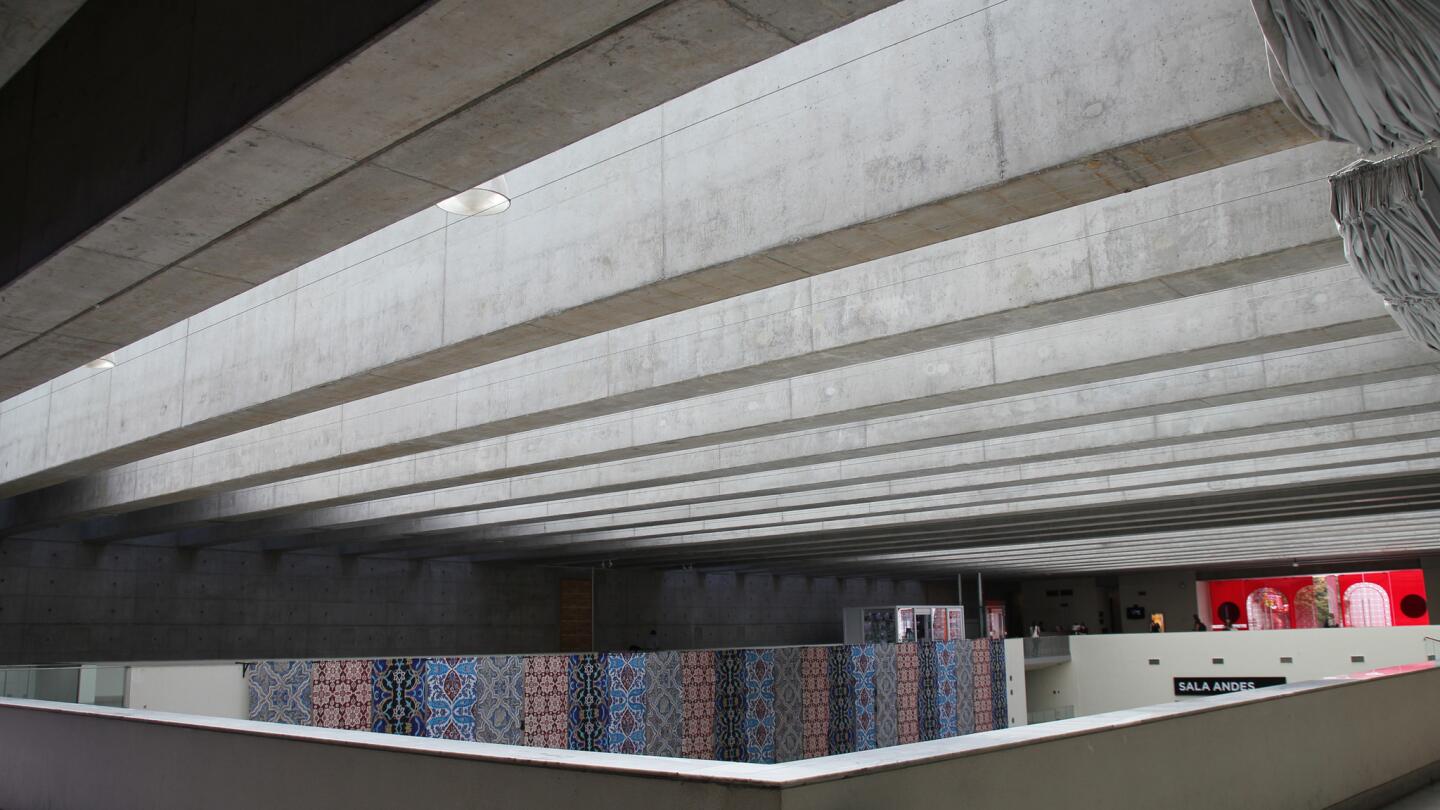
The structure’s dominant motif is expressed in the Béton brut concrete beams that mark the ceiling. Just above is the fountain and the plaza, also designed by Undurraga. (Carolina A. Miranda / Los Angeles Times)
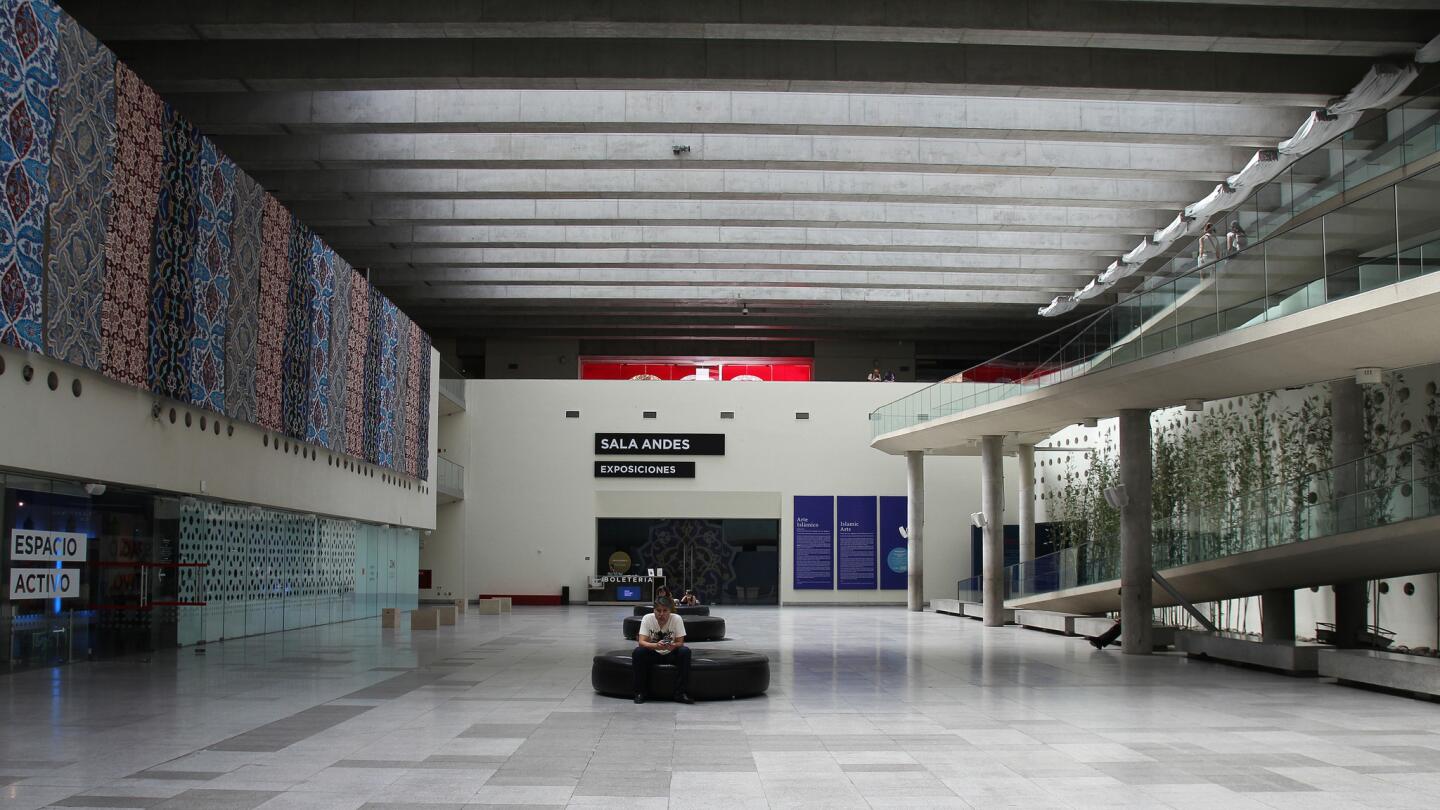
The art galleries reside at either end of the bottom floor, which is accessed via a ramp, at right. There is also a cinematheque, a cafe and some small design shops. The space offers a welcome respite from Santiago’s noise, pollution and, in summer, the blazing heat. (Carolina A. Miranda / Los Angeles Times)
Advertisement
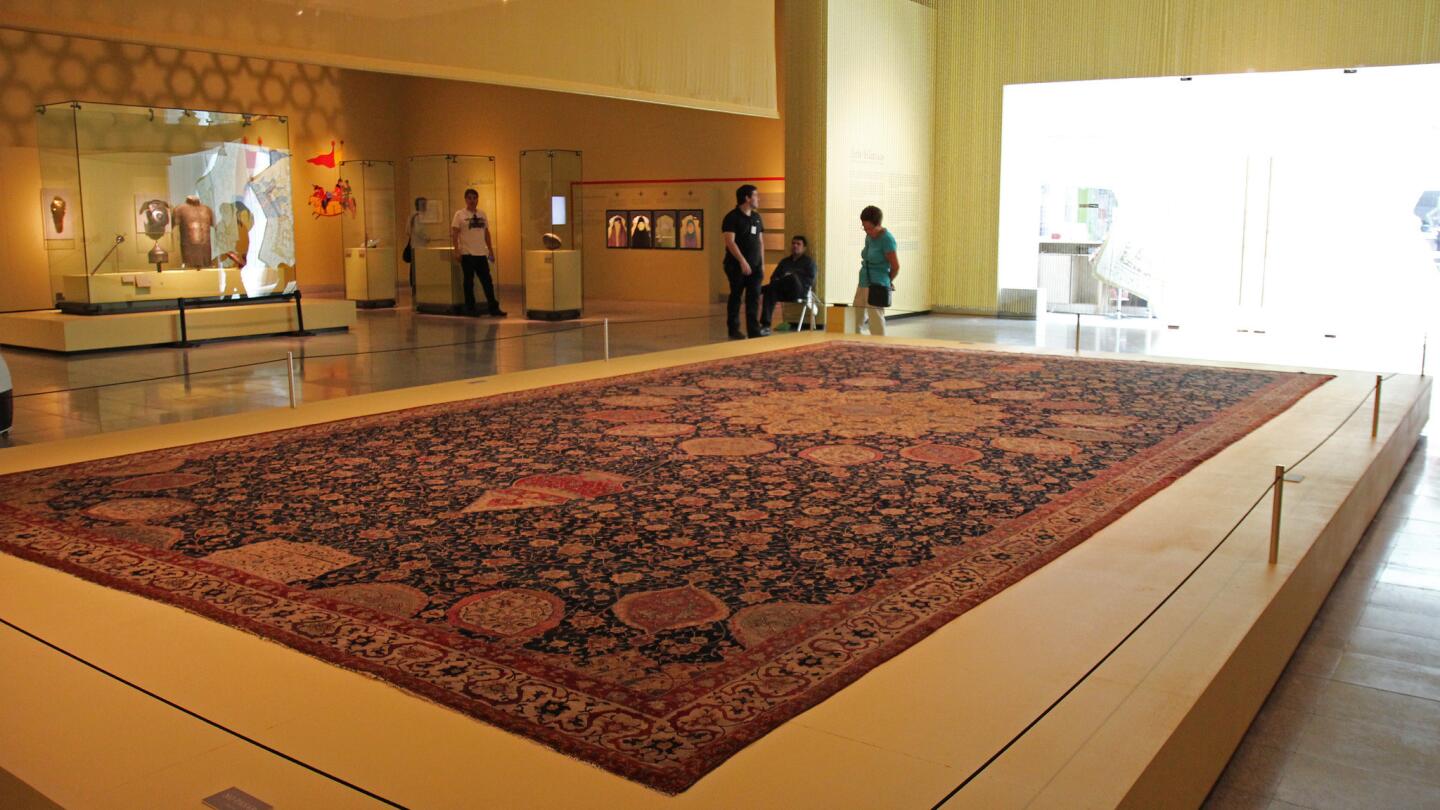
I was greeted in one of the galleries with LACMA’s 16th century Ardabil Carpet. Because of its scale, this extraordinary piece is rarely on view at the museum in Los Angeles. (Carolina A. Miranda / Los Angeles Times)
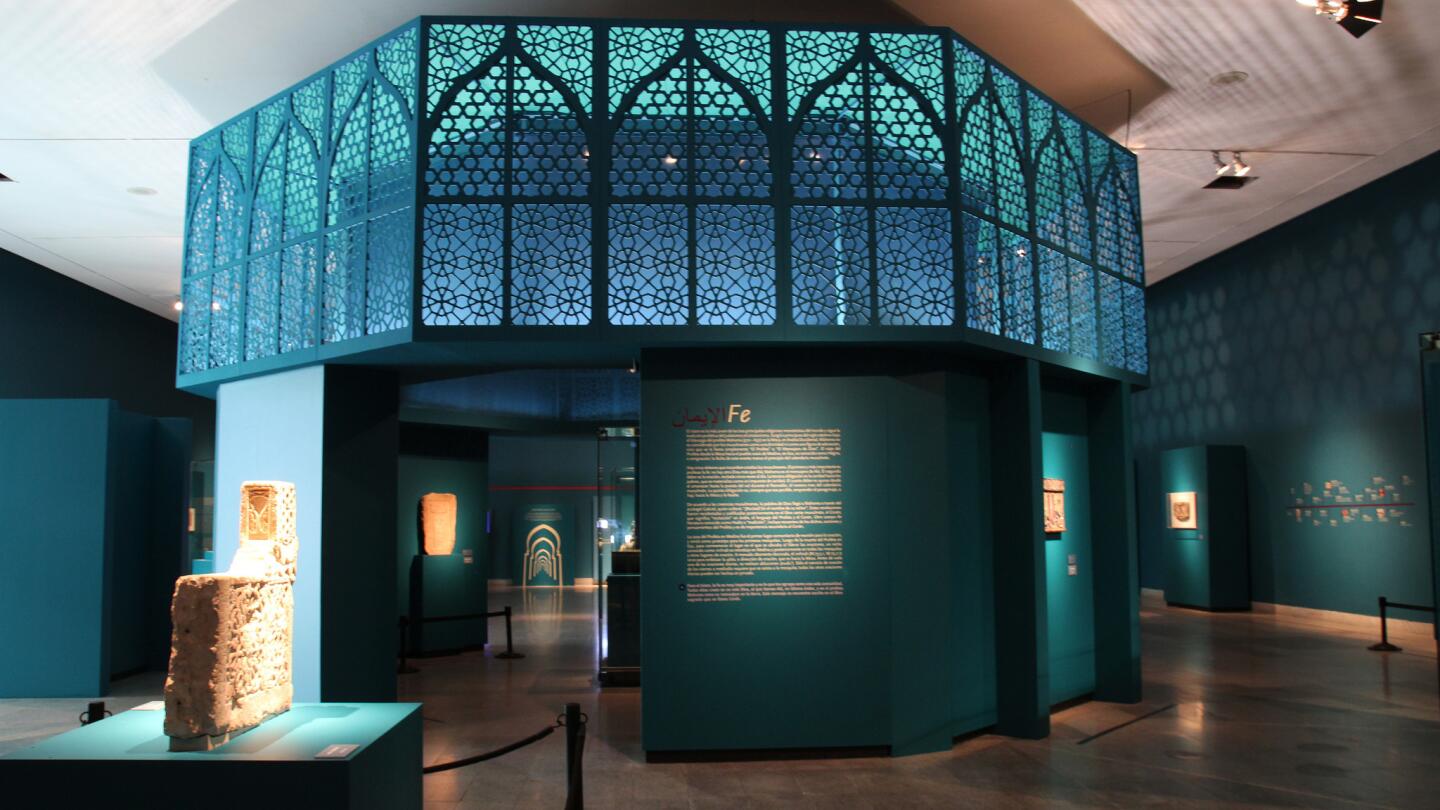
The experience of seeing LACMA’s pieces at La Moneda served as a reminder of how unfriendly the museum’s Ahmanson building is to the permanent collection. Usually these pieces are seen in what is essentially a hallway. In Chile, I saw them in their own specially designed setting. (Carolina A. Miranda / Los Angeles Times)
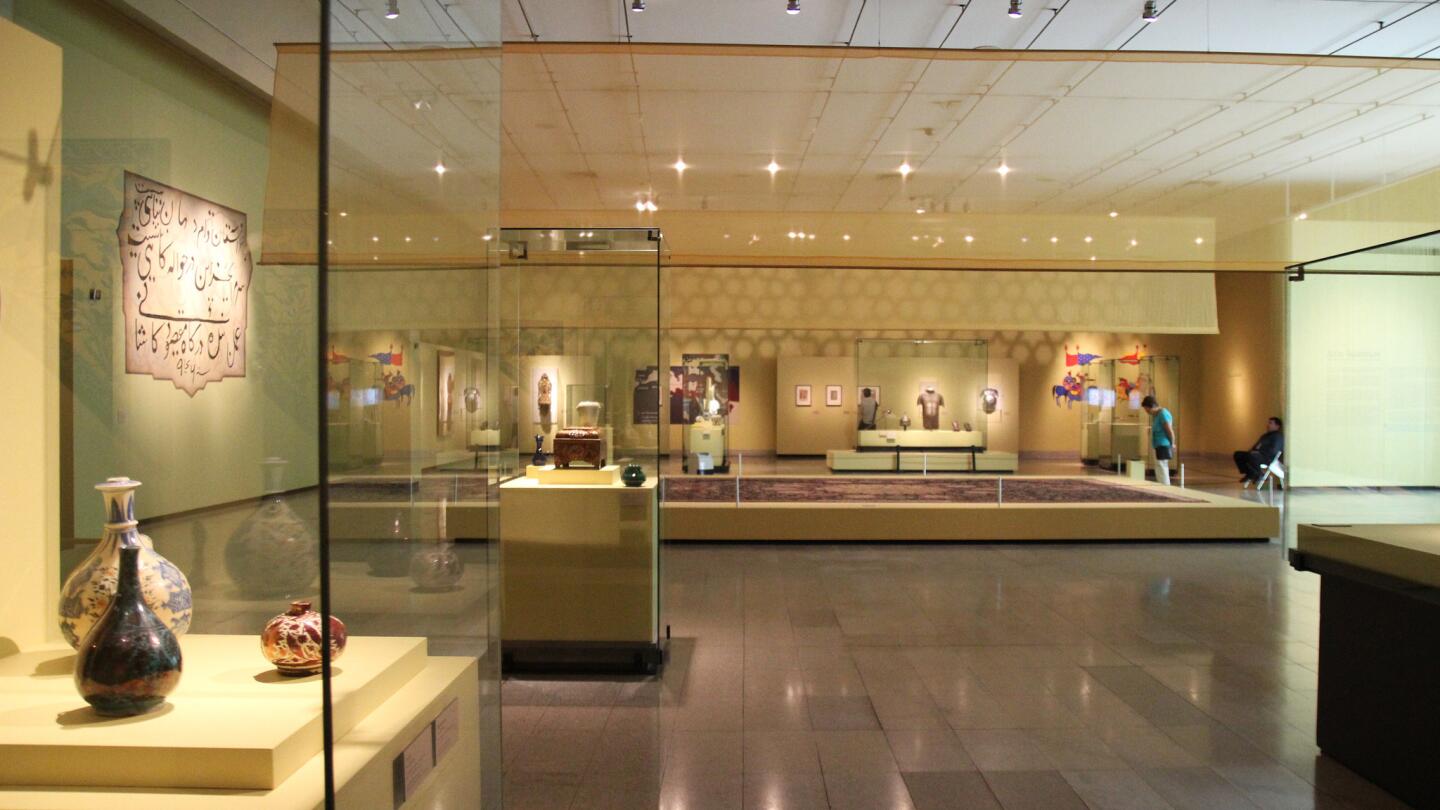
The La Moneda galleries have given LACMA’s Islamic works valuable space. This gives the viewer a better setting in which to absorb the art’s intense pattern and detail. (Carolina A. Miranda / Los Angeles Times)
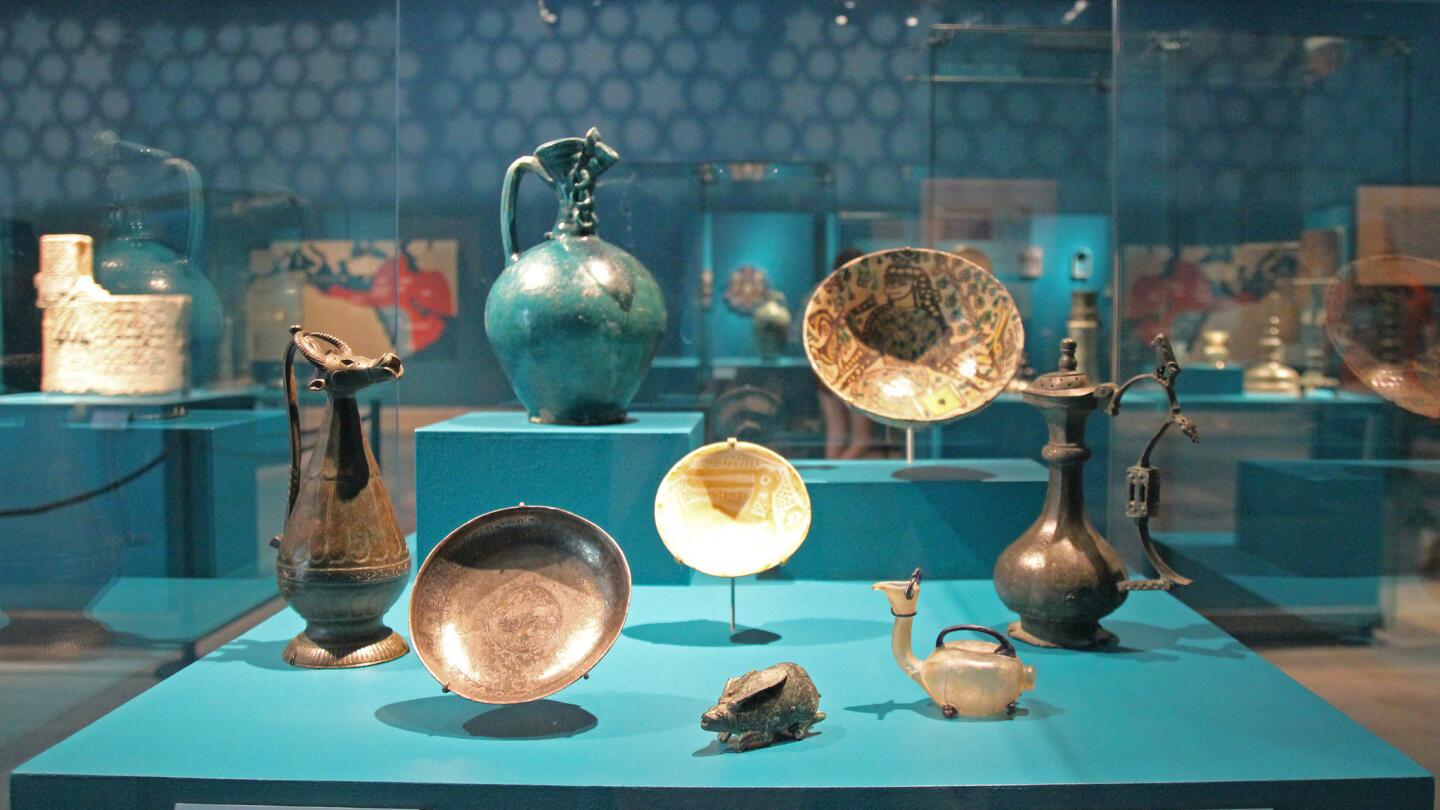
I wasn’t necessarily wild about the turquoise room (too much turquoise), but the pieces looked good - and I got to see one of my favorite works from the collection: a 10th century Iranian vessel in the shape of a camel, at right. (Carolina A. Miranda / Los Angeles Times)
Advertisement
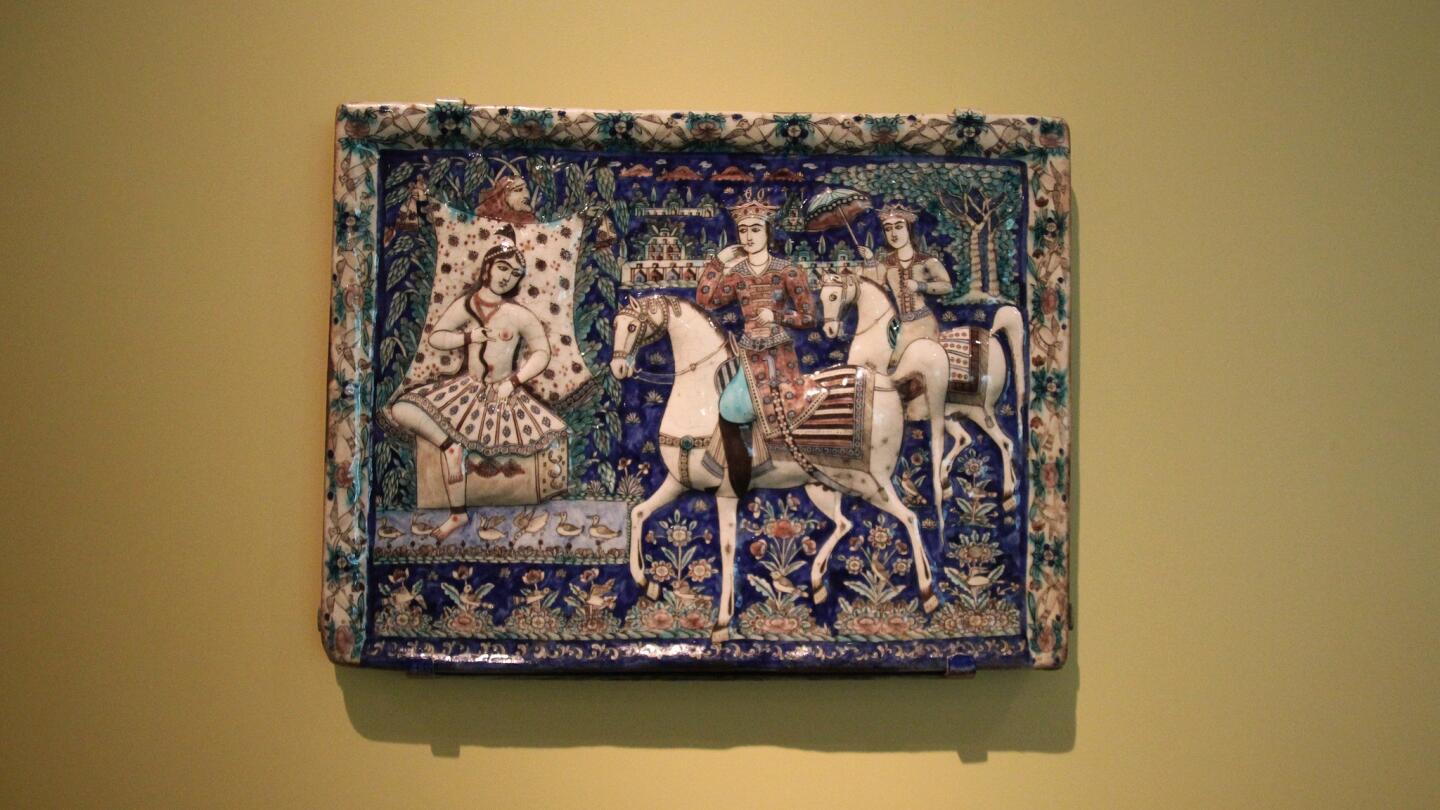
The tale of Khusraw and Shirin was a romance that was most famously told by the Persian poet Nizami Ganjavi. In this painting, the mythical prince spies his love bathing. (Carolina A. Miranda / Los Angeles Times)
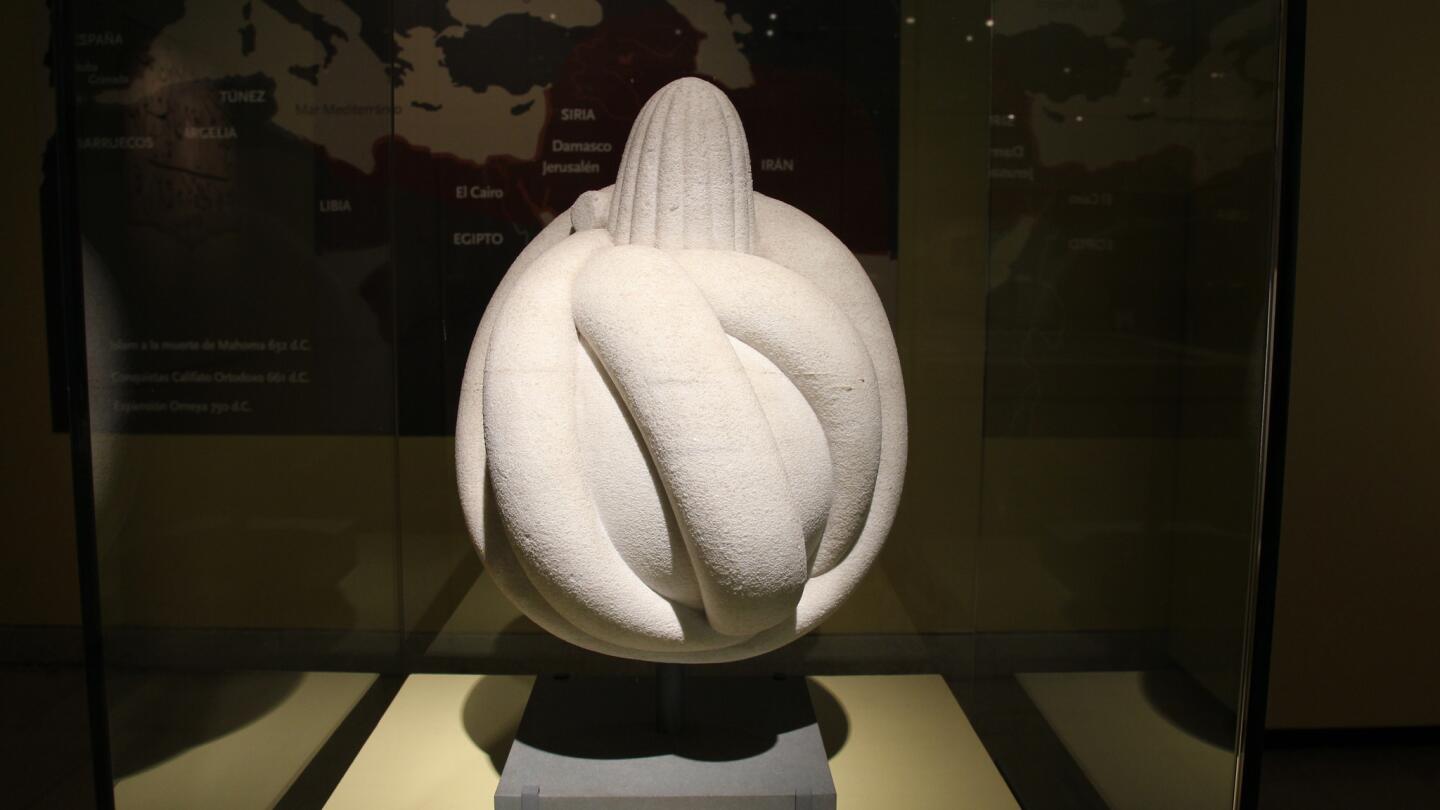
One of my favorite pieces in the show was one I’ve never caught at LACMA: this 16th century cemetery headstone from Turkey in the shape of a turban. (Carolina A. Miranda / Los Angeles Times)
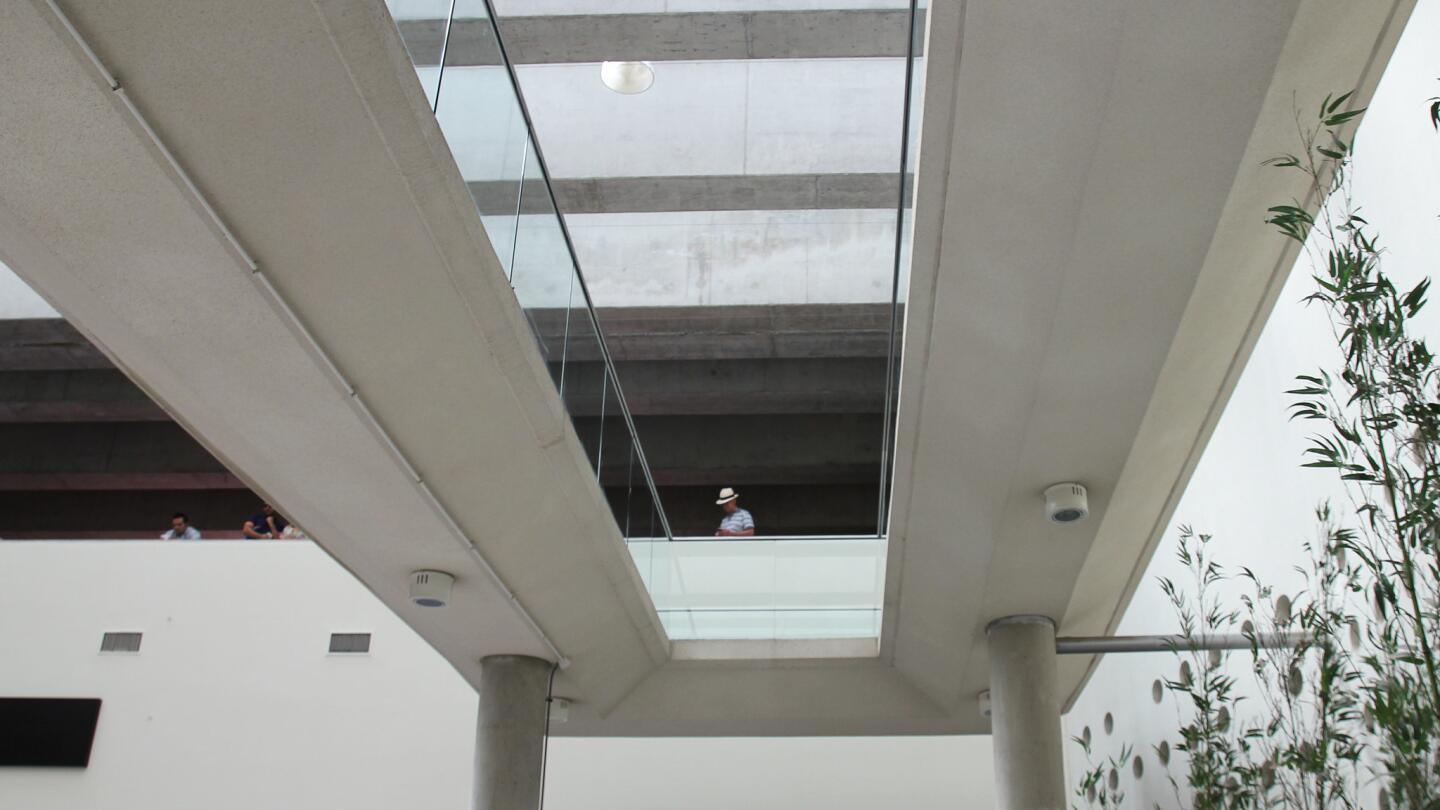
Heading back out from the exhibitions, I caught this view upwards from underneath the ramp. (Carolina A. Miranda / Los Angeles Times)
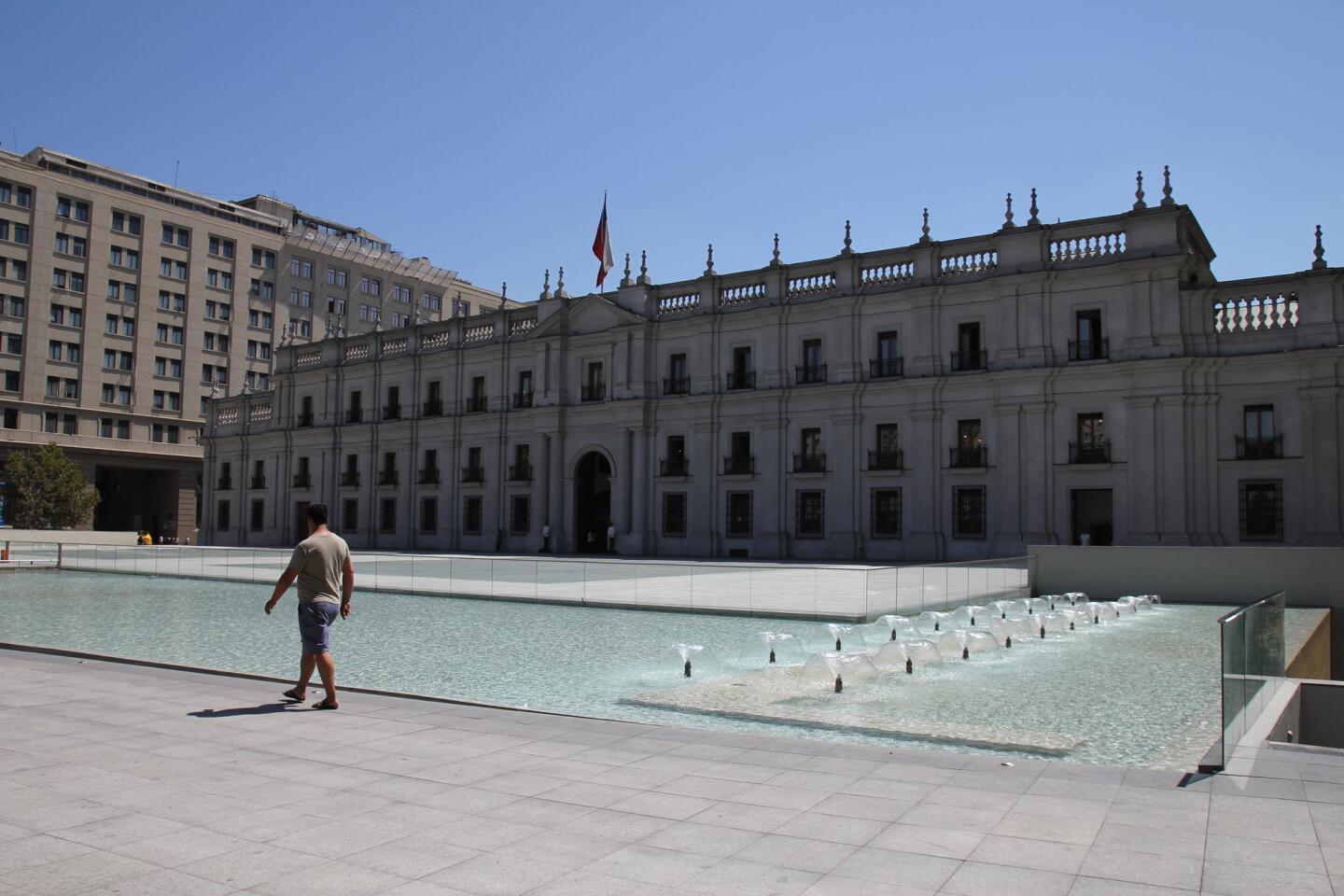
The plaza before the La Moneda Presidential Palace had previously been an unremarkable, flat concrete space. The fountains lighten up the severe symmetry of the Italian neoclassical building. The cultural center lies underneath. (Carolina A. Miranda / Los Angeles Times)



